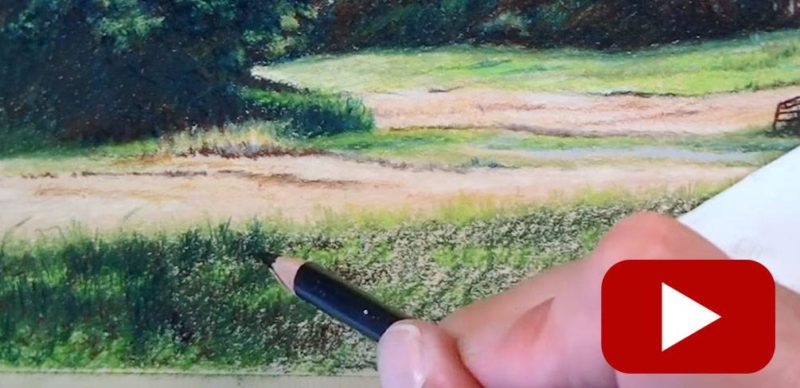Article by Amela Djurakovac We explore 5 YouTube videos that highlight tips and tricks for drawing better so that you can enhance your ability to get your ideas across. When it comes to drawing, it is a form of art where the learning of new techniques never ends.The fact is that there are so many different ways by which you can improve your existing talent! Beginners, and those who are already engaged in drawing, alike, are constantly looking for new tips and tricks like experimentation with making marks, lines, shapes, tones, textures, proportions and shadows, which will help their drawings be little masterpieces. To express feelings, thoughts or creativity, all you need is a few good-quality exercises that can increase your drawing skills. Some of them are very simple but they can be very useful. We can find them online as tutorials and videos and when you learn the basics of each technique, the rest is only limited by your imagination! Here are some simple but useful bits of advice and YouTube tutorials that will make you want to draw even more.
Tips and Tricks for Drawing
1. “Vision on Paper” –Where to Begin?
All ideas and inspirations come from our minds and all the things that we see, so the first thing before drawing is to ask yourself; what do you want to draw? What feelings and expressions do you want to show? Always start with sketches or diagrammatic drawings and let the paper be the means for transmitting your thoughts. You can also use drawing to research a given task or subject that you want to draw, or use them to try to understand the drawings of other artists. Find your perfect place for drawing, and obtain all the necessary equipment you want to draw with. For an example of where to start, take a look at this video about some art supplies for realistic drawings. WATCH >>> My Essential Art Supplies for Realistic Drawings – FAQ Part 2
2. Use of the Value Scale
The value scale is a very important element of every drawing. Why? Well, drawing is an illusion of shadows and lights and the combination of these factors can really add a professional look to your drawing. You can make your one value scale with different values and create a nice depth for your drawn objects. Pay careful attention to reflected light, shadows, and highlights, so if you want to draw a very realistic picture or abstract subjects or even give a three-dimensional shape the illusion of form, you will need to measure light levels and observe the highlight, mid-tone, core shadow, reflected light, and cast shadow. In perspective drawing, by reducing the contrast in more distant objects, you can effectively portray depth. WATCH >>> The Basics of Highlights Midtones and Shadows
3. The Problem of Dimensions
In everything that we want to draw, there is a problem of dimensions. Finding the right dimensions is really an important step especially when we want to produce a complicated drawing like a human figure. For example, if you want to draw a human face, these are the dimensions that you should know; the eyes are halfway between the top of the head and the chin, the center of the upper lip is halfway between the eyes and the chin, the width of the mouth is the same as the distance between the pupils, and a horizontal line drawn through the center of the eyes should be parallel to a line drawn through the center of the mouth. If you are not sure, you can use the grid method. WATCH >>> Draw Realistically with the Grid, Realism WATCH >>> How to use the Grid Method with a Drawing of Chuck Close as an Example
4. A Combination of Different Drawing Techniques
Sometimes you may be wondering what technique to use for your drawing? And whether, for a particular type of drawing, there is a ‘best’ technique? As you may know, the pencil is one of the most popular drawing tools, and you can use it for all types of drawings, as well as colored pencils. For landscape drawings or adding details, it is good to use watercolors or pastel, although oil pastels are a very expressive media used for impressionistic landscapes. Soft media, such as charcoal, is excellent for atmospheric techniques or quick drawings. This potential you can see in the landscape drawings of Leonardo da Vinci, where he produces atmosphere with a simple piece of chalk. Or, you can use different techniques in combination with hand drawings or digital drawings. For landscape drawings or adding details, it is good to use watercolors or pastel, although oil pastels are a very expressive media used for impressionistic landscapes. Soft media, such as charcoal, is excellent for atmospheric techniques or quick drawings. This potential you can see in the landscape drawings of Leonardo da Vinci, where he produces atmosphere with a simple piece of chalk. Or, you can use different techniques in combination with hand drawings or digital drawings. WATCH >>> Pastel Tips for Drawing and Painting
WATCH >>> Colored Pencil Tips
5. Some Simple key Advice:
- Never save money by buying low-quality drawing accessories
- A smooth, glossy paper requires a much softer pencil, whereas rough paper takes a harder pencil
- The drawing instrument should be connected to your arms – learn how to use it
- Before beginning a drawing, always note where the light is coming from
- If you are not sure whether the composition of your drawing is good, you can make a frame in the shape of a square for different views and pick the best one. Usually landscape drawings are placed on horizontal paper
- Drawing is both a way of seeing and a way of knowing a subject, so look carefully at what you want to draw
- Regardless of technique, color is always added gradually with as little pressure as possible
- To avoid contaminating lighter colored areas with darker ones, paint them first when they are adjacent to darker colors.
- Always keep your hands clean while drawing
- Practice, practice, practice!
Before learning any technique or tips for drawing, you need to enjoy the moments of drawing because it is not just a drawing technique or skill that determine the quality of your drawing, but the love that you express while you are drawing. In the arts, there are no limits, so in addition to daily exercise and experimentation, you need to know yourself through drawing so that it becomes a facet of your lifestyle. In other words, it becomes your response to how you see the world around you. Have you got any tips and tricks for drawing? Let us know in the comments section below!
Recommended Reading:
- SketchUp for Site Design: A Guide to Modeling Site Plans, Terrain, and Architecture by Daniel Tal
- Rendering in SketchUp: From Modeling to Presentation for Architecture, Landscape Architecture and Interior Design by Daniel Tal
Article by Amela Djurakovac Feature Image: Printscreen from featured YouTube Tutorial | Source
Published in Blog









